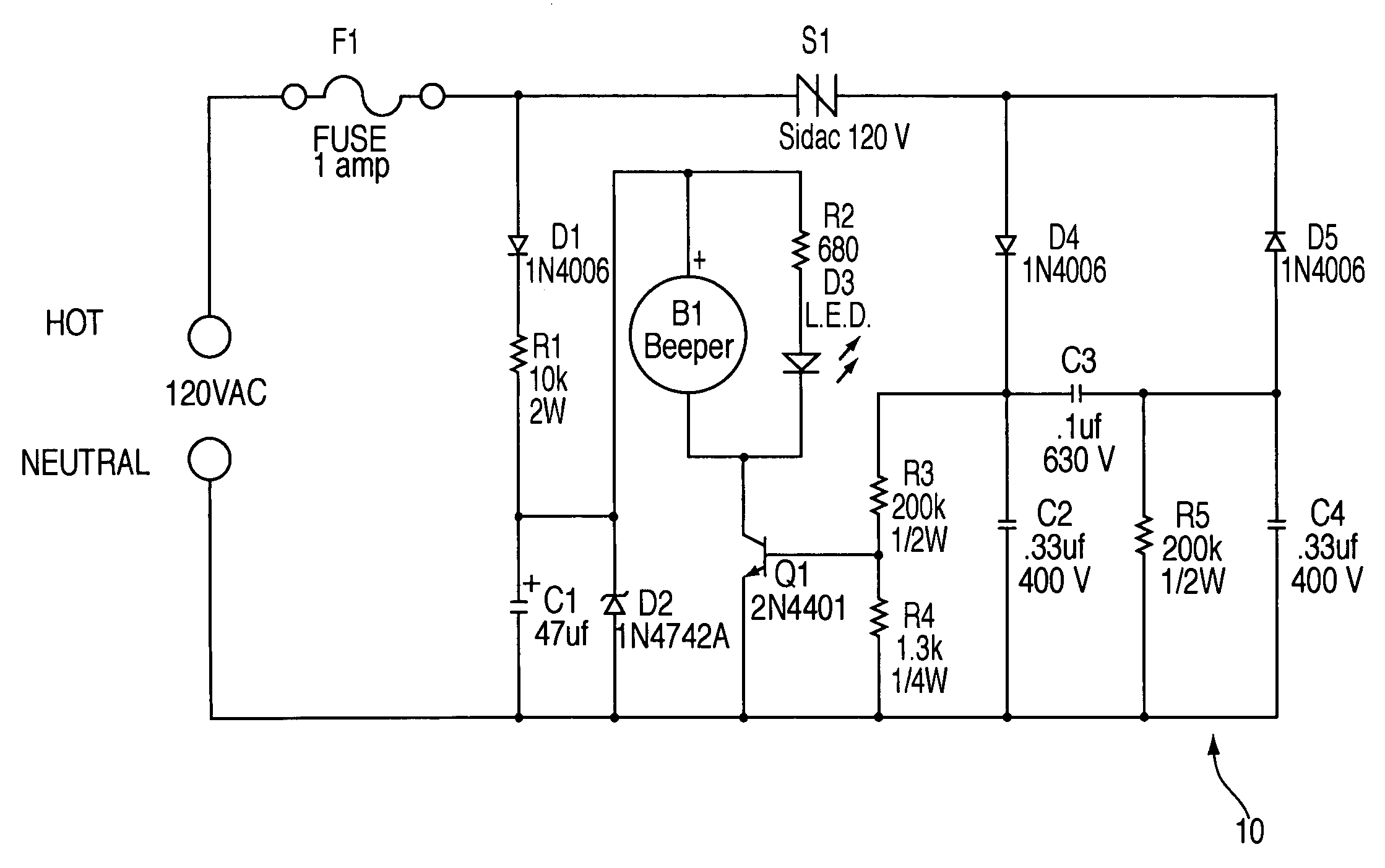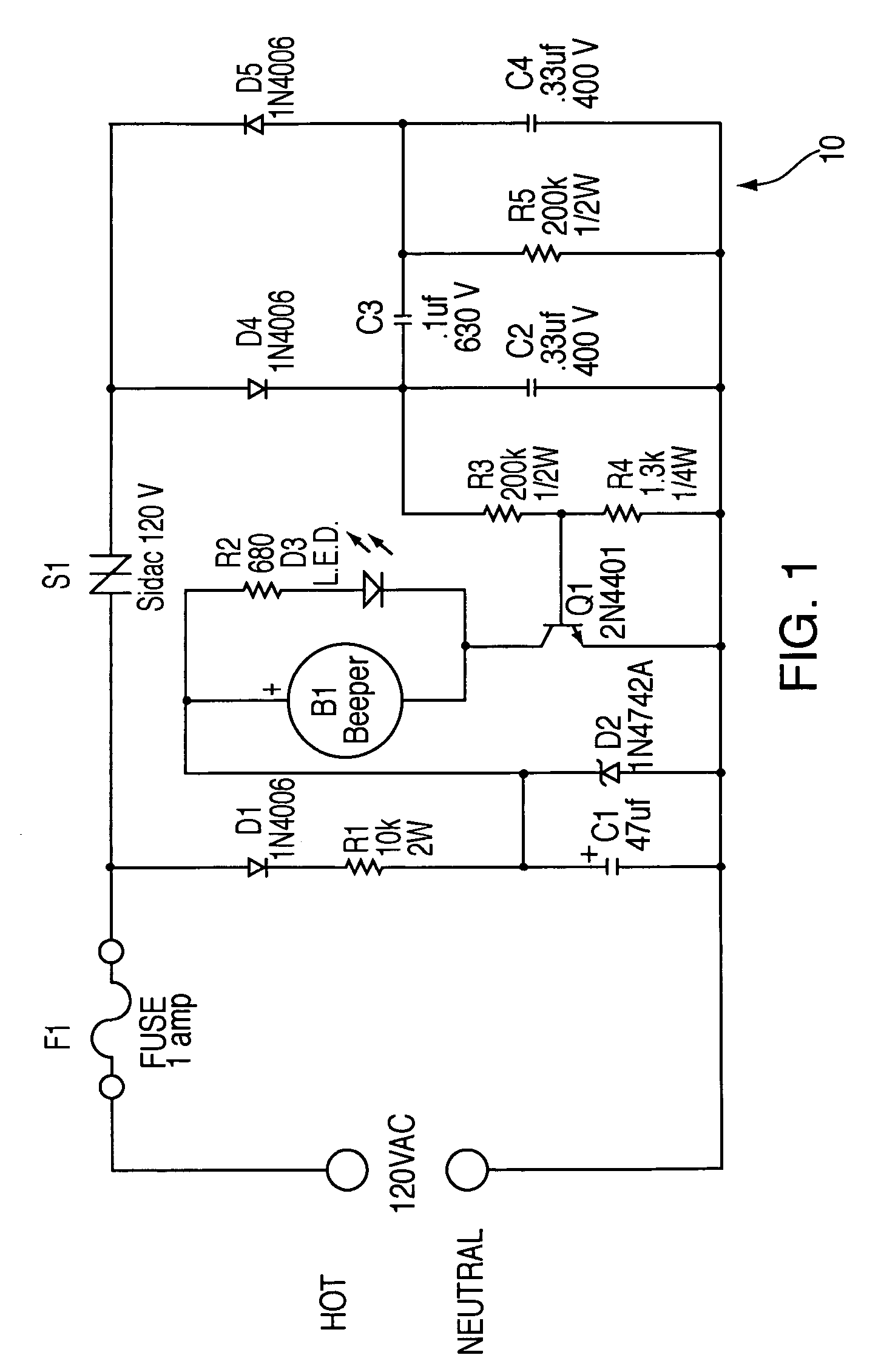Device for locating and identifying circuit breakers
a circuit breaker and device technology, applied in the direction of measuring devices, electrical testing, instruments, etc., can solve the problems of inconvenient user rotation of the receiver, difficulty in seeing light,
- Summary
- Abstract
- Description
- Claims
- Application Information
AI Technical Summary
Benefits of technology
Problems solved by technology
Method used
Image
Examples
Embodiment Construction
[0020]With reference to the drawings, wherein the same reference number indicates the same element throughout, there is shown in FIG. 1 a schematic of the pulse-generating transmitter 10. Transmitter 10 is adapted for use with a standard AC receptacle powered from one of the branch circuits supplied by a circuit breaker panel.
[0021]Transmitter 10
[0022]AC line voltage is applied to fuse F1, the junction of F1, S1 and D1 have Hot AC line voltage present with respect to the AC Neutral return connection. The series combination of D1 and R1 form a half wave current limited source for charging capacitor C1, the magnitude of this voltage is limited by zener diode D2. The resulting voltage at the junction of R1, C1, and D2 produces a DC supply for powering beeper B1 and light emitting diode (LED) D3, current through LED D3 is further limited by resistor R2. Transistor Q1 is configured as a voltage controlled switch, when this switch is in conduction its collector emitter creates a path to c...
PUM
 Login to View More
Login to View More Abstract
Description
Claims
Application Information
 Login to View More
Login to View More - R&D
- Intellectual Property
- Life Sciences
- Materials
- Tech Scout
- Unparalleled Data Quality
- Higher Quality Content
- 60% Fewer Hallucinations
Browse by: Latest US Patents, China's latest patents, Technical Efficacy Thesaurus, Application Domain, Technology Topic, Popular Technical Reports.
© 2025 PatSnap. All rights reserved.Legal|Privacy policy|Modern Slavery Act Transparency Statement|Sitemap|About US| Contact US: help@patsnap.com



